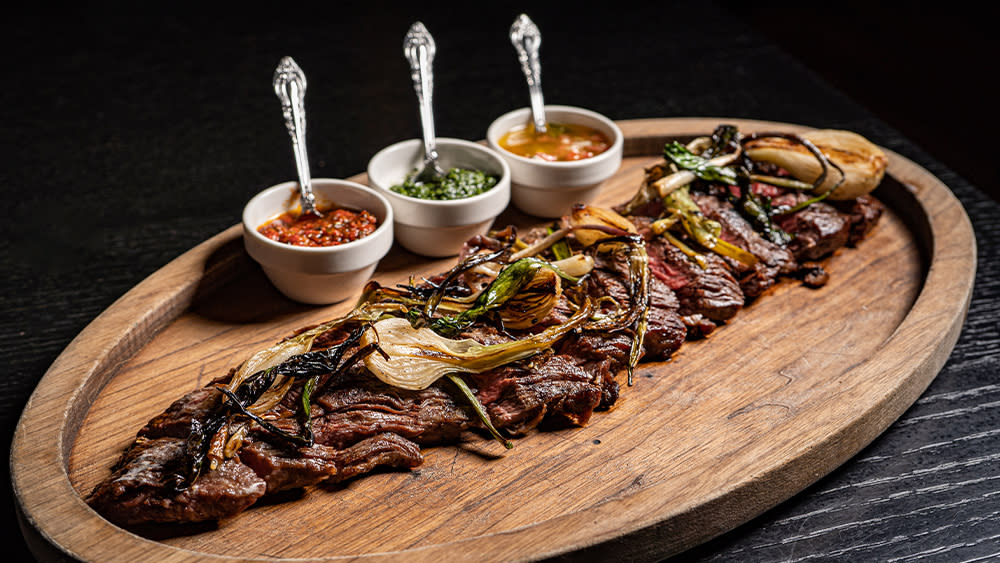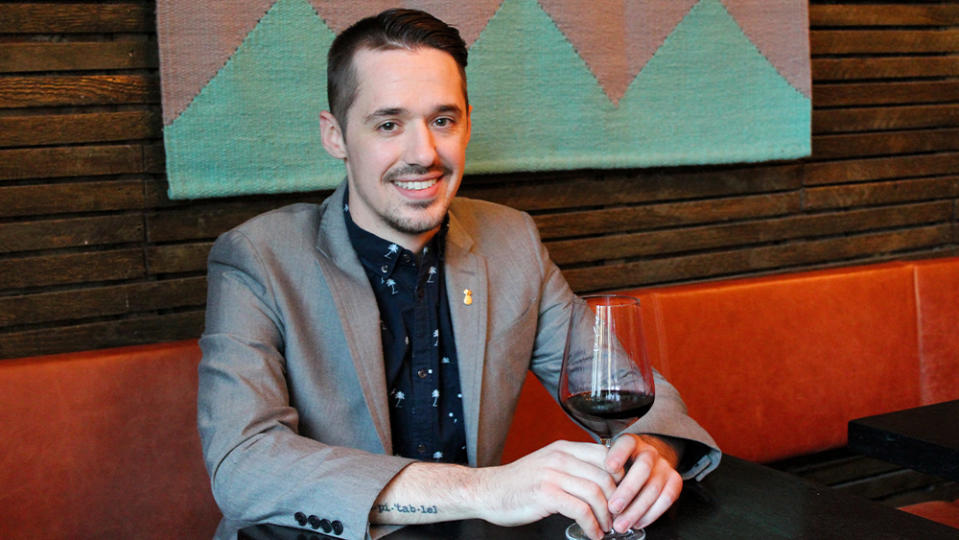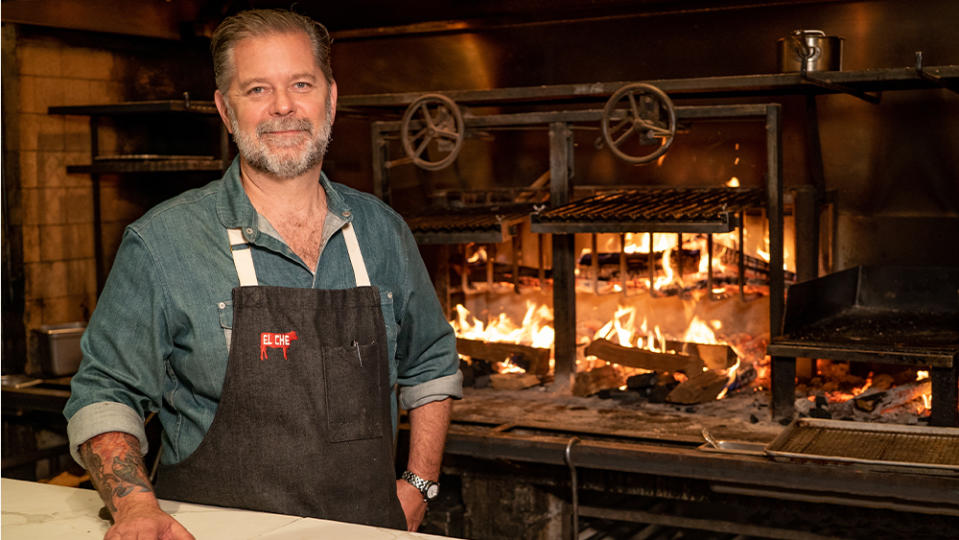How This Chicago Steakhouse Became a Destination for Fine South American Wine

When John Manion opened El Che in Chicago’s West Loop six years ago, he wasn’t planning on adding to the city’s already robust roster of steakhouses. Influenced by a childhood partly spent in Brazil, where his family moved for his father’s job when Manion was eight, and also by lengthy travel to Argentina in the 1990s, his intent was a classic parrillada, a Buenos Aires-style grill restaurant named for the parilla on which everything is cooked. However, the trappings of a steakhouse are present at El Che, from the rich assortment of beef cooked over open flame, to shellfish platters, to a bacon-blue cheese wedge salad, as well as sides of fries, mashed potatoes, and asparagus.
“We actually added ‘steakhouse’ to the name three years in to help people understand what it was we were doing. It helped. A lot,” Manion told Robb Report. Nevertheless, visitors to El Che are immediately aware that this is not a typical Midwest temple of beef. First off, as Manion pointed out, “Every steak, bird, vegetable and aquatic creature gets touched by the flame.” The flame in question warms and illuminates the entire back of the restaurant via a custom-built 12-foot hearth fitted with Argentine-style crank-operated, adjustable height grills. Chicago steakhouse “tropes and traditions” are given an Argentine spin: Classic shellfish, whether commingled or a la carte, is served grilled rather than chilled, the bacon and blue cheese wedge is topped with chimichurri, beef fat fries come with a side of chimi aioli, and asparagus, in a nod to both Argentina and Italy’s large Italian immigrant populations, is smothered in pepperoncini, pancetta, and parmesan breadcrumbs.
More from Robb Report
One of America's Best Steakhouses Is Opening Its First International Outpost in Singapore
Chicago Is Hosting NASCAR's First-Ever Street Race This Weekend
His Sandwich Shop Inspired 'The Bear,' but He Still Hasn't Watched the Hit Show
Where El Che really sets itself apart from the typical Chicago steakhouse is the wine list. Don’t expect Napa or Bordeaux with your beef here. The cellar is 100 percent South American. Half of the 300-plus bottles within its 12 pages are from Argentina, 40 percent are Chilean, and the balance hail from Uruguay, Brazil, and Peru. Compare that with the offerings that were in place when wine director Alex Cuper joined in 2019; half were from Argentina, 40 percent from North America, and 10 percent from Europe. Now, with its sole focus on South America, El Che has turned itself into one of the country’s great destinations to explore that continent’s wine region.

During the restaurant’s pandemic-era closure, Cuper and Manion decided to revamp the wine offerings to focus completely on South America. The depth and breadth of the lineup is overwhelming at first glance, with an entire page of Cabernet Sauvignon and three pages of Argentine Malbec divided by region and subregion. Cuper and his team take great pleasure in guiding diners through the options and helping to find wine that will suit their food choices and wine preferences.
“We treat Malbec much like steakhouses treat Cabernet Sauvignon. There is a vast world of styles and sub regions that each carry specific and unique qualities,” Cuper told Robb Report. Typically, I like to lead off with a simple question in reference to tannin, body and fruit. This allows us to narrow down a specific sub region that we feel best fits their needs.”
Cuper maintains that despite stereotypes, “all Napa Cabernet Sauvignon is not created equal,” and neither is Cabernet Sauvignon from Argentina or Chile. He finds Argentine Cabernet Sauvignon to be “lifted and bright, oftentimes with high acidity, red fruits and less tannin,” thanks to “soil composition and winemaker ideology.” On the other hand, if a table of diners requested a bottle of Cabernet akin to one from Napa, he would steer them towards a selection from Chile because of their propensity to exhibit “a lot of green and herbal characteristics” in addition to their “rich dark fruits.” If a table states a preference for Napa Cab but is open to suggestion, Cuper’s first call is Malbec from Lujan de Cuyo, a Mendoza subregion. His favorite in-house bottle is Viña Alicia Brote Negro Malbec, made from a single row of 150-year-old vines that give it a “super dense and chewy style with deep concentrated fruits.”

For diners looking for something out of the ordinary, Cuper recommends Viña González Bastias Salvaje, a blend of Pais and Black Moscatel, two of the original grapes brought to South America in the early 16th century. While it may not be to everyone’s taste, Cuper points out, “It smells funky and gamey, but then on the palate it jumps with fresh red fruits, dried herbs, and a very nice texture that just makes it so fun to drink and extremely unique.”
With so much seafood on the menu, there are plenty of whites on hand as well, including interesting picks such as Moscatel, Torrontel, and Corinto from the south of Chile and Torrontés from Argentina. That said, Cuper swears that “Chardonnay is Argentina’s best kept secret.” Thanks to high vineyard altitude, cool nights, mineral-rich soils, and a lack of new oak in the winemaking process, the country produces a bounty of Chardonnay that Cuper describes as “beautiful, racy, and overall elegant.”
So, while you’re waiting for your ribeye, tomahawk, porterhouse, strip steak, picanha, or even the enormous mixed parrilladato be grilled to perfection by Manion, chef de cuisine Adam Meyer and the rest of the team, order a wedge, a few empanadas, and some shellfish and ask Cuper and his squad to start you with the ideal white and guide you towards the ideal red. It’s like taking a trip to South America in a single sitting.
For a deeper dive, book one of El Che’s monthly wine dinners featuring selections from a single region or producer poured by the glass rather than the bottle at the restaurant’s Hearth Table. Hosted by Alex Cuper, these intimate events allow you the opportunity to enjoy chef Manion’s cuisine expertly paired with a focused selection of wines that will enhance your knowledge while delighting your palate. And if your interest has really been piqued, Cuper curates a rotating collection of wines each month for El Che’s wine club. Upcoming themes include “The Other Regions of Argentina” and “The Other Reds of South America,” two ideas that are explored in depth on the restaurant’s wine list.
Best of Robb Report
Why a Heritage Turkey Is the Best Thanksgiving Bird—and How to Get One
The 10 Best Wines to Pair With Steak, From Cabernet to Malbec
Sign up for Robb Report's Newsletter. For the latest news, follow us on Facebook, Twitter, and Instagram.

